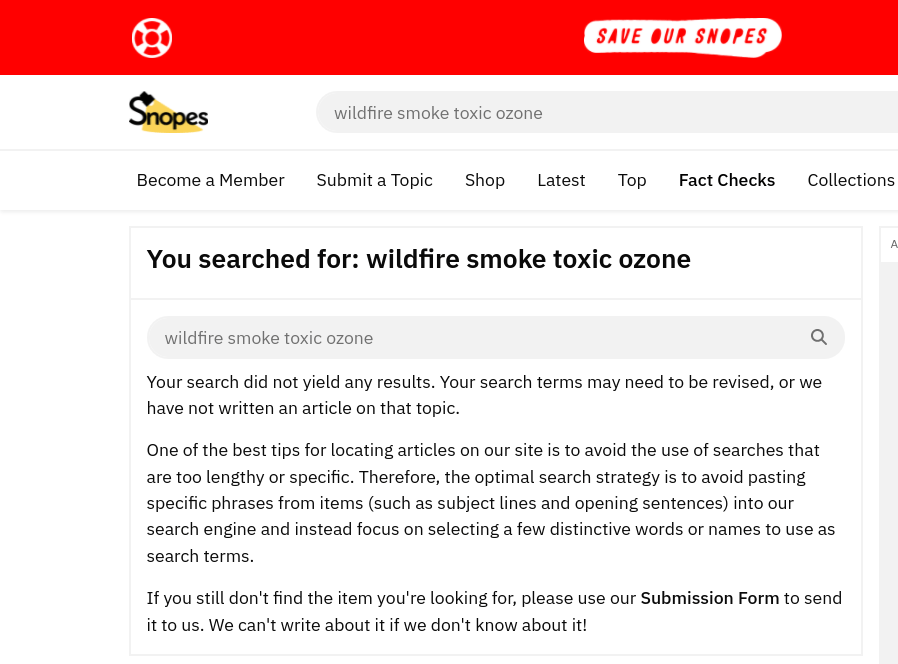
The Article I chose:
https://www.sciencenews.org/article/wildfire-smoke-toxic-ozone-urban-air-pollution-cities
The article was claiming that wildfire smoke could help the production of the molecules in the ozone layer. It talks about a new study that reveals that wildfire smoke when mixed with nitrogen oxides (toxic gases found in car exhaust) could elevate ozone levels in urban areas. Atmospheric ozone can cause respiratory problems because of the harsh compounds it is thought to contain. So to test this theory, NASA and NOAA sent a jetliner, turned into a flying lab, to collect samples of the atmosphere in areas of concentrated wildfire smoke. When testing the samples, it was confirmed that wildfire smoke contains an array of compounds and nitrogen oxide that could help ozone formation and production.
Steps to Verification:
1) snopes.com

I first went onto snopes.com to search up the topic and saw that they didn’t have an article written on wildfire smoke and toxic ozone production.
2) Wikipedia

I searched on Wikipedia for Science News, the magazine that published the article, and found that they have an article written it. It was first issued in 1922 as Science News Letter but then changed its name in 1966 to just Science News. As I was reading the Wikipedia article, I found that they weren’t discredited for anything and are trustworthy because they follow scientific consensus and write evidence-based articles.
3) Google search

I also Google searched the topic and found other reliable Science magazine sources that wrote an article based on the evidence they had found when sampling the atmosphere contaminated with wildfire smoke.
My Judgement Call:
I believe that the news article is true because of the fact that they have been found trustworthy in the Science community, their article was written based on evidence that was collected by both NASA and the NOAA. I also researched the science behind ozone production and the compounds found in the atmosphere that help with the production of O3.